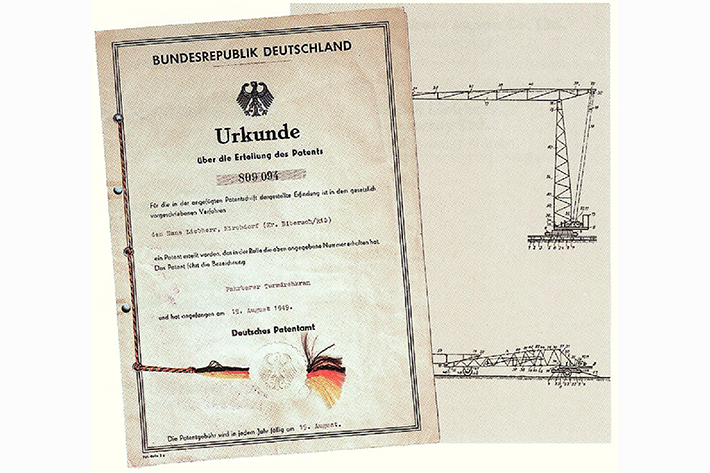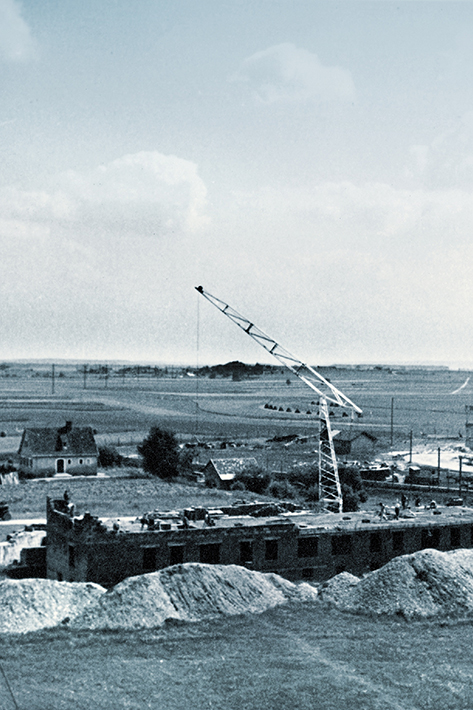70 years ago, on 19 August 1949, the German Patent Office issued the patent for the first mobile tower crane by Hans Liebherr. Its invention laid the foundation for the success story of the Liebherr Group.
Biberach an der Riss (Germany) 20 August 2019 – In 1949 the rebuilding process in Germany and Europe is in full swing. The construction workers had to manually load stones, mortar, cement or bricks from the trucks for building apartments and industrial facilities. Because in postwar Germany there were very few cranes and the few that existed were made from iron and cast steel and were extremely heavy. The building was time-consuming, meaning that cranes were only used occasionally on construction sites.
The master builder Hans Liebherr had already worked meticulously on an idea for some time, which now came at exactly the right time: a mobile, powerful tower crane. Hans Liebherr honed his sketches, had drawings created and built the first Liebherr tower crane TK 10, which was easy to transport and could be erected within a short space of time. A groundbreaking construction – the first of many with which Hans Liebherr influenced the history of technology. Under the keyword “mobile tower crane”, the founder of the company successfully registered his invention with the German Patent Office, which issued the patent on 19 August 1949. This first machine marked the beginning of the lifelong and continuous pioneering work of Hans Liebherr and to this day represents the cornerstone of the company.

Innovation as a trademark
70 years later Liebherr has evolved into an international technology company with eleven product divisions and is now one of the largest construction equipment manufacturers in the world. The family-run company recently showcased its latest product innovations from the construction machinery area at Bauma 2019, the biggest construction equipment trade fair in the world, on an area of 14,000 m². The 60 exhibits also included the latest successor to the TK 10: The fast-erecting crane 125 K has very little in common with the original ancestor apart from the concept of a mobile and powerful tower crane, which lifts heavy loads quickly and safely, also at lofty heights. With a 55 metre jib length and a maximum hook height of 65.5 metres, it is the largest fast-erecting crane on the market and outdoes its ancestor TK 10 many times over.
Source: Liebherr

